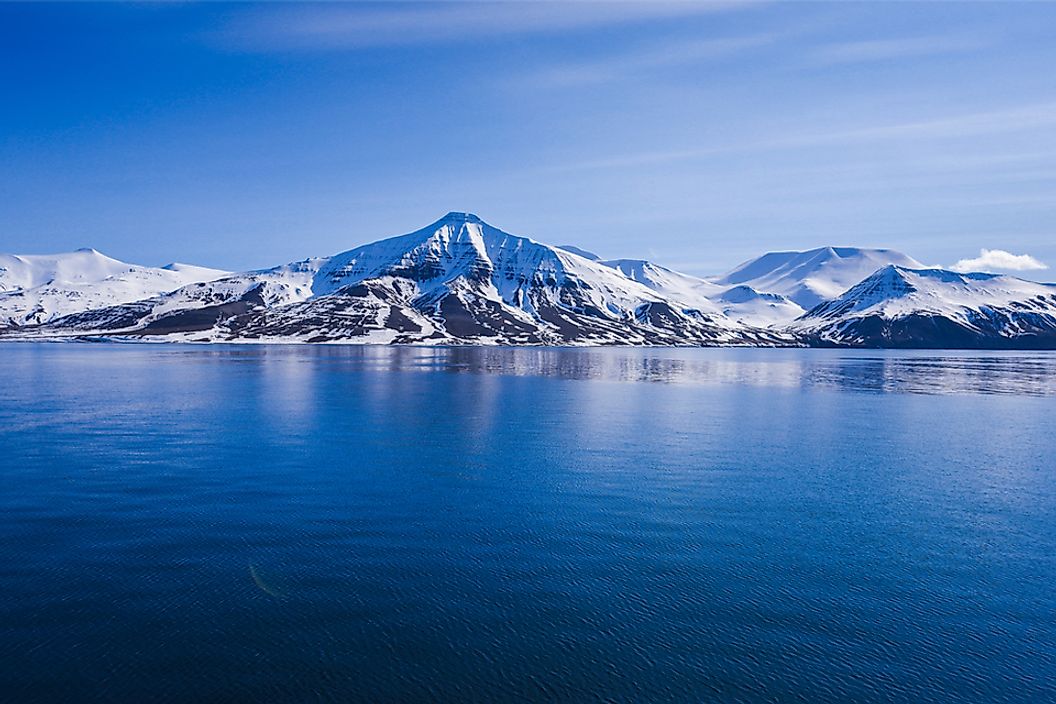Which Ocean Is the Shallowest?

Of the five major oceans of the world, the Arctic Ocean ranks as the smallest and shallowest. The International Hydrographic Organization includes it as an ocean, but a section of oceanographers recognize it as an estuary or a mediterranean sea of the Atlantic Ocean. The Arctic Ocean is one of the least-known water bodies due to factors such as its remoteness and hostile weather.
History
The north polar regions were subject to various myths in much of European history. Early cartographers debated whether to include the region as water or land. Water eventually won, but some subsequent mapmakers often left the region blank. The initial nautical crossing of the ocean was done by Fridtjof Nansen in 1896, and in 1969 Wally Herbert was at the forefront of a dogsled expedition across the ocean's surface aided by air support. The Soviet Union deployed drifting ice stations from 1937, which has monitored the region extensively. Scientific communities were founded on the drift ice and transported thousands of kilometers via ice floes. The European part of the ocean was heavily disputed in World War II.
Geography
The Arctic region sits on an estimated area of 5,427,000 square miles. The region's surrounding area features land masses such as Greenland, Eurasia, North America, and some islands and its coastline stretches for 28,200 miles. The nations situated along the ocean's borders are the US, Russia, Greenland, Iceland, Canada, and Norway. The ocean's average depth is estimated at 3,407 feet, making it the shallowest ocean. The Arctic region includes such water bodies as the White Sea, East Siberian Sea, Kara Sea, Hudson Bay, Barents Sea, Hudson Strait, Beaufort Sea, Greenland Sea, and the Laptev Sea. The Bering Strait links the Arctic and Pacific Oceans, while the Labrador and Greenland Seas links the Arctic Ocean to the Atlantic.
Climate
The Arctic Ocean falls within a polar climate distinguished by continuous cold and relatively narrow yearly temperature ranges. Winters in the region are characterized by stable weather conditions, extreme cold, the polar night, and successive low-level temperature inversions. Temperatures can reach over the melting point during summer, a period which is also characterized by continuous daylight. The Arctic region is cloudy throughout the year. The temperature of the ocean's surface is relatively constant, and remains close to the freezing point of seawater.
Flora, Fauna and Natural Resources
The Arctic Ocean possesses abundant populations of Lion's mane jellyfish, as well as the banded gunnel. Phytoplankton thrives in the ocean, receiving nutrients from the currents of the Pacific and Atlantic Oceans, as well as from rivers. The phytoplankton reproduces rapidly and photosynthesizes for long stretches of time when the sun shines day and night during summer. The Arctic Ocean holds gravel aggregates, natural gas, placer deposits, petroleum, sand and polymetallic nodules.
Environmental Concerns
The Arctic ice pack has been melting. Warming temperatures in the Arctic region may trigger the release of massive quantities of freshwater into the north Atlantic, which may subsequently disrupt the patterns of world ocean currents. This situation has the potential to cause extreme changes in the climate of the Earth. Other concerns include radioactive contamination and clathrate breakdown.











